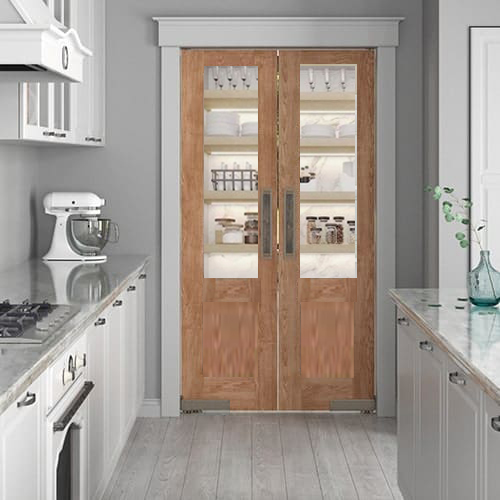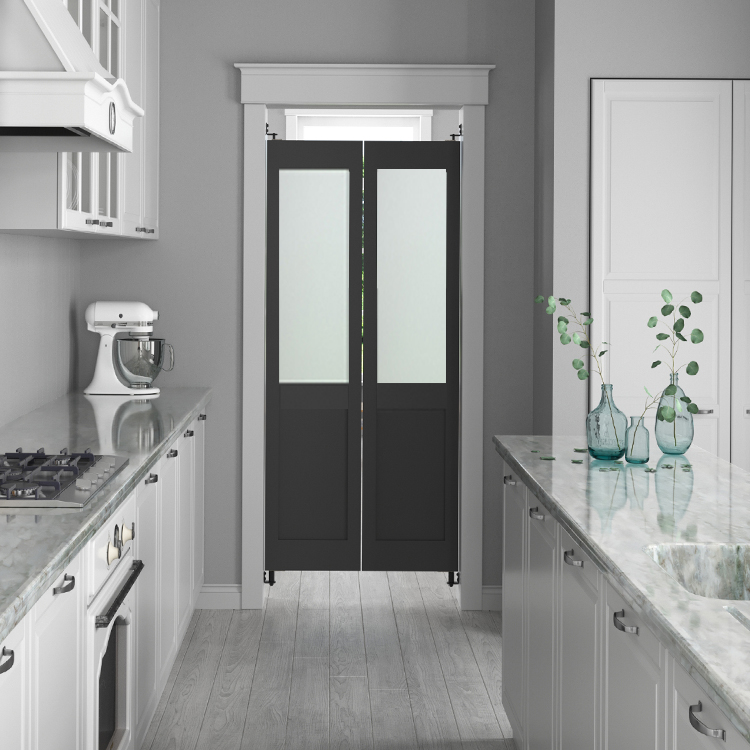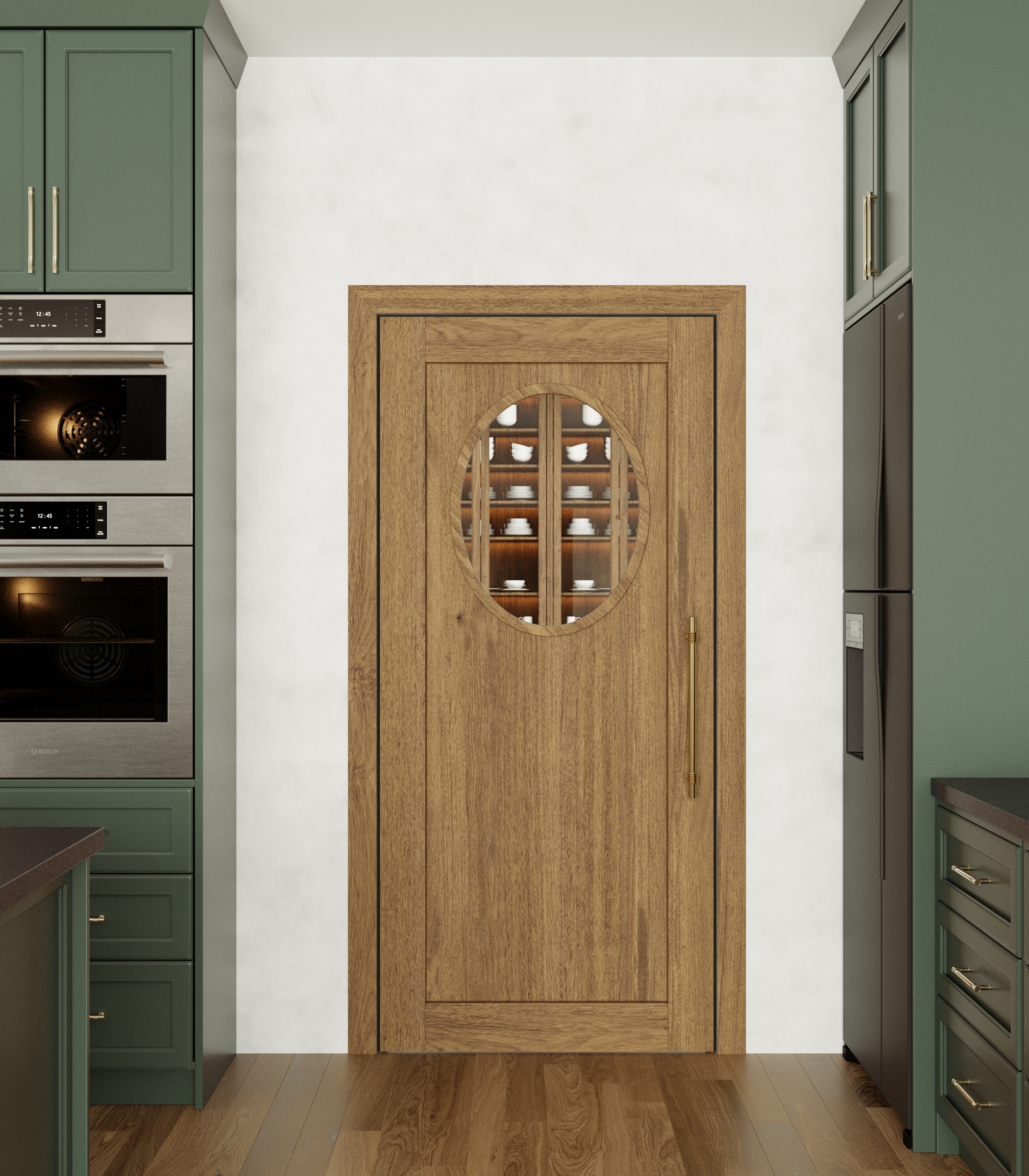
Pantry Door Hinges: A Complete Guide
Pantry Door Hinges: A Complete Guide
Pantry door hinges are essential hardware components that connect the door to its frame, enabling it to swing open and close. They support the door's weight and ensure smooth, reliable operation. Besides their functional importance, hinges also contribute to the aesthetic appeal of your pantry doors.
Key Takeaways :
- "Match hinge type to door design and weight: butt/concealed for standard/light doors, pivot or continuous (piano) for tall/heavy doors; European concealed hinges add soft-close and easy adjustability."
- "Choose durable materials and coordinated finishes: stainless steel or brass for moisture resistance; align finishes (matte black, satin nickel, chrome, etc.) with kitchen hardware for a cohesive look."
- "Ensure longevity with correct install and upkeep: accurate placement/mortising, regular lubrication and screw tightening, fix misalignment/rust early; typical cost ranges from $5–$100+ per pair."
Why Are Pantry Door Hinges Important?
- Functionality: Proper hinges ensure smooth opening and closing without squeaks or resistance.
- Durability: High-quality hinges withstand daily use and maintain alignment.
- Aesthetics: Decorative hinges can enhance the overall design of your kitchen.
Types of Pantry Door Hinges
- Butt Hinges
- Traditional two-piece hinges are joined by a pin.
- Durable and suited for standard pantry doors.
- Concealed Hinges
- Hidden inside the door and frame for a seamless look.
- Ideal for modern, minimalist kitchens.
- Pivot Hinges
- Attach at the top and bottom, allowing smooth rotation.
- Great for heavy or uniquely designed doors.
- Continuous (Piano) Hinges
- Run along the entire door length for even support.
- Best for tall or heavy doors.
- European Hinges
- A type of concealed hinge featuring soft-close functionality.
- Adjustable and perfect for high-end installations.
Materials Used in Pantry Door Hinges
- Steel: Affordable and durable, often coated to resist rust.
- Brass: Offers a classic look and resists corrosion, ideal for humid spaces.
- Stainless Steel: Rust-resistant and perfect for modern, industrial-style kitchens.
- Zinc Alloy: Lightweight and cost-effective, suitable for lighter doors.
Choosing the Right Hinges for Your Pantry Door
Door Type and Weight
-
- Lightweight doors: Butt or concealed hinges.
- Heavy doors: Pivot or continuous hinges for extra support.
- Aesthetic Considerations
- Match hinge finishes with other kitchen hardware, such as polished chrome, matte black, or antique brass.
- Durability and Performance
- For frequent use, select corrosion-resistant, heavy-duty hinges with smooth operation.
Installing Pantry Door Hinges
Tools Required
- Drill and screwdriver
- Measuring tape
- Chisel (for mortised hinges)
- Pencil or marker
Installation Steps
- Mark Hinge Placement: Measure and mark 7 inches from the top and bottom of the door.
- Cut Mortises (if needed): Create recesses for mortised hinges using a chisel.
- Attach Hinges: Secure hinges to the door first.
- Align Door: Position the door in the frame and secure the other hinge side.
- Test Operation: Ensure smooth opening and closing.
Maintenance Tips for Pantry Door Hinges
- Cleaning: Wipe with a damp cloth to remove dust.
- Lubrication: Use silicone-based lubricant for smooth operation.
- Tightening Screws: Check and tighten loose screws regularly to maintain alignment.
- Fixing Squeaks: Apply petroleum jelly or a silicone spray to the hinge pin.
Decorative Hinges for Pantry Doors
- Ornamental Designs: Intricate patterns or shapes add charm to rustic or traditional kitchens.
- Finishes and Colors: Options like satin nickel, oil-rubbed bronze, and matte black can complement your kitchen's style.
Cost of Pantry Door Hinges
- Budget-Friendly: Basic steel or zinc hinges cost $5–$20 per pair.
- Premium Options: European soft-close hinges or brass designs range from $30–$100 per pair.
Common Problems with Pantry Door Hinges and Solutions
- Misaligned Doors
- Cause: Incorrect installation or loose screws.
- Solution: Adjust hinges and retighten screws.
- Loose Screws or Stripped Holes
- Cause: Frequent use or over-tightening.
- Solution: Use wood filler to repair holes, or replace screws with longer ones.
- Rust and Corrosion
- Cause: Moisture exposure.
- Solution: Replace with rust-resistant hinges like stainless steel.
Sustainability in Pantry Door Hinges
- Recycled Materials: Opt for hinges made from recycled metals to reduce environmental impact.
- Eco-Friendly Finishes: Choose powder-coated or anodized finishes for long-lasting durability.
Final Thoughts
Pantry door hinges are small but vital components that influence the functionality and style of your kitchen. From traditional butt hinges to modern concealed options, choosing the right hinges ensures your pantry doors operate smoothly while complementing your kitchen's design. Investing in high-quality hinges will pay off in terms of durability, performance, and aesthetic appeal.



